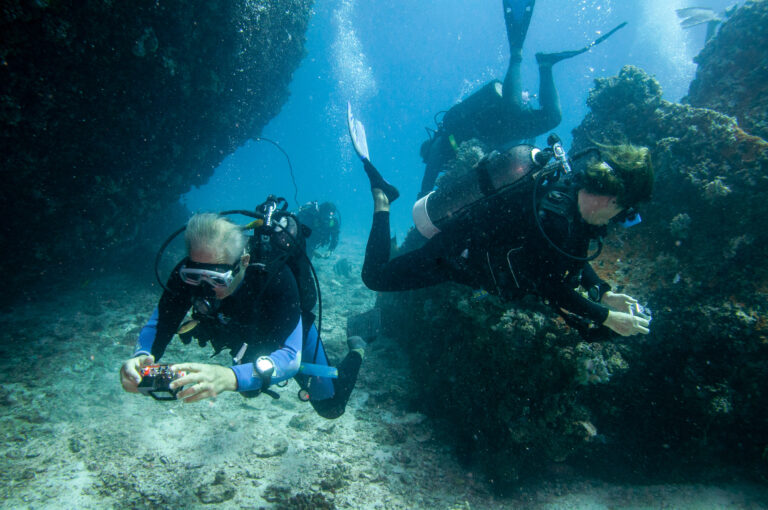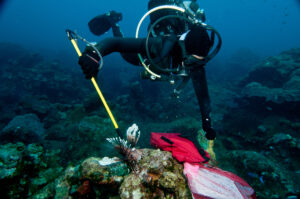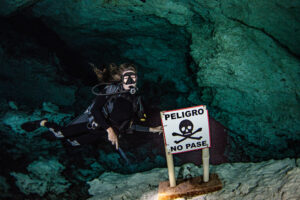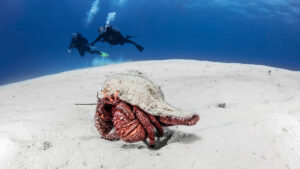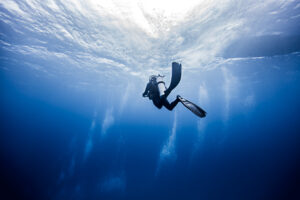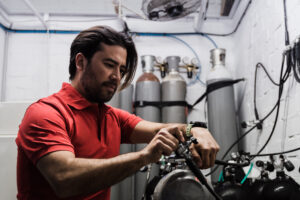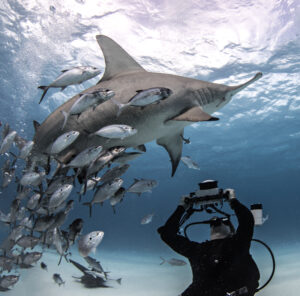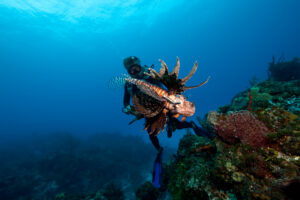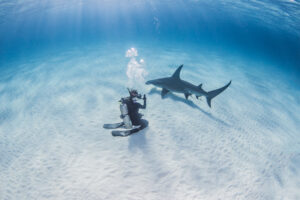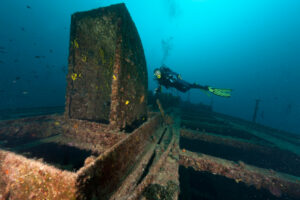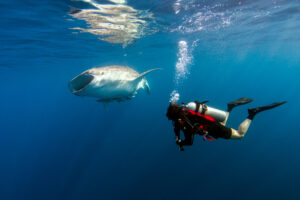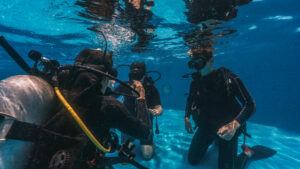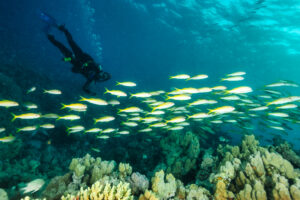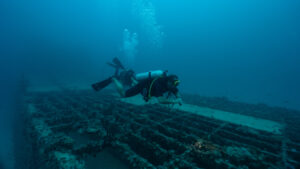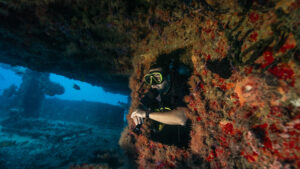What is Ascent when Diving?
Ascent refers to the upward movement a diver makes as they transition from being submerged underwater to reaching the surface. This process is an essential phase in scuba diving, directly impacting the safety and health of the diver. Ascent is not necessarily a straightforward or continuous journey from depth to the surface; it may require planned pauses, known as decompression stops, to help the body adjust to pressure changes and avoid decompression sickness, a condition commonly called “the bends.” In scuba diving, a controlled and deliberate ascent is crucial to maintaining well-being, preventing injuries, and ensuring a safe return to the surface. This article will explore the importance of ascent, its stages, best practices, and the potential risks divers face during this critical part of the dive.
Importance of Ascent in Scuba Diving
The ascent phase is one of the most crucial parts of scuba diving, particularly from a safety perspective. As a diver descends deeper into the water, the increasing pressure causes nitrogen, which is present in the air we breathe, to dissolve into the body’s tissues. This is a natural process, but as a diver begins to ascend and the surrounding pressure lessens, the dissolved nitrogen starts to escape from the tissues back into the bloodstream. If a diver ascends too quickly, nitrogen gas can form bubbles in the body, leading to decompression sickness, which can range from mild symptoms, like joint pain, to life-threatening complications, such as paralysis or death. Thus, controlling the rate of ascent is critical to allow the body to safely release the accumulated nitrogen.
Additionally, a slow and controlled ascent helps maintain other physiological balances. The pressure changes affect not only nitrogen levels but also the air spaces in the body, such as the lungs, ears, and sinuses. A too-rapid ascent can result in barotrauma, where tissues and organs are damaged due to the inability to equalize pressure quickly enough. Maintaining a consistent, controlled ascent minimizes these risks and ensures a safe return to the surface.
In deeper dives, the body absorbs more nitrogen due to prolonged exposure to increased pressure. This necessitates the need for decompression stops, which are scheduled pauses during the ascent. These stops give the body additional time to release nitrogen safely. By adhering to proper ascent procedures, divers can prevent decompression sickness and other complications, enabling them to complete their dives safely and enjoyably.
Stages of Ascent
Initial Ascent
The ascent process begins when a diver decides to end the dive and starts moving upwards from their deepest point. This stage, known as the initial ascent, requires careful management of buoyancy to avoid an uncontrolled rise to the surface. Divers adjust their buoyancy compensators (BCs) to maintain a neutral buoyancy state, allowing them to ascend at a controlled pace. It is essential to start the ascent slowly to allow the body to begin adjusting to the pressure changes and to prevent nitrogen bubbles from forming too quickly in the tissues.
During this stage, divers must also be mindful of their depth gauges and dive computers, which track their position and ascent rate. This information is critical to ensure they do not exceed the recommended ascent speed and risk injury. The initial ascent often brings the diver to the first decompression stop, depending on the dive profile.
Ascent with Stops
The ascent process may include one or more decompression stops, depending on the depth and duration of the dive. These pauses occur at predetermined depths and for specified durations based on dive tables or the diver’s computer, which calculates nitrogen saturation in the body. Decompression stops allow the diver’s body to safely release nitrogen before continuing the ascent. These stops are essential for deep dives where nitrogen absorption is higher, and the risk of decompression sickness is elevated.
Dive computers help in determining when and how long decompression stops should last. Even in non-decompression dives, it is common practice for divers to include a safety stop. This is a precautionary stop made at a relatively shallow depth, typically at 15 feet (4.5 meters), to further reduce any nitrogen in the body. These stops are part of the strategy to ensure that the diver can resurface without complications.
Final Ascent
The final ascent starts after the last decompression or safety stop. During this phase, divers need to maintain a controlled and slow rate of ascent, ideally not exceeding 30 feet (9 meters) per minute. Some agencies recommend a slower ascent of 18 feet (5.5 meters) per minute for the last 60 feet (18 meters), to give the body extra time to adjust. The final ascent phase is critical for ensuring that the remaining nitrogen is safely released. As the diver approaches the surface, they must keep adjusting their buoyancy to avoid an uncontrolled rise.
Upon reaching the surface, the diver inflates their BC to achieve positive buoyancy, allowing them to float comfortably on the water’s surface. Before fully resurfacing, divers should also check for potential hazards, such as boat traffic or rough water conditions, and inflate their surface marker buoy (SMB) to signal their location to boats and other vessels.
Best Practices for a Safe Ascent
Controlled Ascent Rate
Maintaining a controlled ascent rate is one of the most important factors for ensuring diver safety. The general recommendation is to ascend no faster than 30 feet (9 meters) per minute, a rate designed to minimize the risk of decompression sickness. This sickness occurs when nitrogen, dissolved in the body’s tissues under high pressure, forms bubbles as the pressure decreases during ascent. If the ascent is too rapid, these bubbles can expand too quickly, potentially leading to joint pain, dizziness, paralysis, or even death. Divers use dive computers or depth gauges to accurately monitor their ascent rate and ensure that it stays within the recommended limits. Keeping track of this ascent speed is especially crucial when the diver is surfacing after a deep or long dive, where nitrogen absorption is greater.
In some cases, a slower ascent rate is encouraged, particularly during the final portion of the dive. Some diving organizations recommend reducing the ascent rate to 18 feet (5.5 meters) per minute during the last 60 feet (18 meters) to further reduce the risk of decompression sickness. This allows for the body to off-gas nitrogen more gradually, promoting a safer transition to the lower pressure environment near the surface. Adhering to these ascent protocols helps ensure that divers avoid the dangerous consequences of a rapid ascent, which can lead to not only decompression sickness but also lung overexpansion injuries caused by expanding gases trapped in the body.
Decompression and Safety Stops
Decompression stops are required when divers spend a significant amount of time at greater depths, as more nitrogen is absorbed into the body. As the diver ascends, the surrounding pressure decreases, and the body begins to release the nitrogen. To prevent nitrogen bubbles from forming too quickly and causing decompression sickness, divers must stop at specified depths for predetermined amounts of time. These decompression stops are calculated using dive tables or dive computers, which track the diver’s depth and time spent underwater. By pausing at these depths, divers allow their bodies to release nitrogen safely and reduce the risk of injury.
Even when decompression stops are not required, divers are encouraged to make a safety stop during their ascent. A safety stop is a brief pause, usually conducted at around 15 feet (4.5 meters) for 3 to 5 minutes. This stop is particularly beneficial after longer or deeper dives and serves as an extra precaution to eliminate any residual nitrogen that may have accumulated in the diver’s body. Though not always mandatory, the safety stop is a widely accepted practice among divers to ensure a smoother, safer ascent. Incorporating safety stops into every dive, regardless of depth or duration, is a good habit that can significantly reduce the risk of decompression sickness.
Use of Visual and Auditory Cues
Visual and auditory cues play a critical role in helping divers maintain control during their ascent. Dive computers are invaluable tools in this regard, as they provide real-time feedback on critical data such as depth, ascent rate, and decompression stop requirements. Many modern dive computers are equipped with alarms that sound if the diver ascends too quickly, providing an auditory alert to adjust the ascent speed. This feature helps divers stay within safe limits and avoid the dangers associated with a rapid ascent. In addition to dive computers, depth gauges and watches can also be used to monitor ascent progress, allowing divers to make precise adjustments as needed.
Natural light changes can also serve as useful visual cues during the ascent. As divers ascend, they often notice the water becomes brighter and clearer, indicating their proximity to the surface. These changes, along with visual cues from the surrounding environment, such as nearby objects or marine life, help divers gauge their position in the water column. By paying attention to both natural and technological cues, divers can maintain a controlled and safe ascent, avoiding the potential hazards that come with poor monitoring or rapid ascents.
Equalizing Ear Pressure
As a diver ascends, the surrounding pressure decreases, and this change can cause discomfort or injury to the ears if not properly managed. Equalizing ear pressure during ascent is critical to avoid barotrauma, which occurs when the pressure inside the ear does not match the external pressure. One of the most common techniques used by divers to equalize pressure is the Valsalva maneuver. By gently blowing against closed nostrils while keeping the mouth shut, divers can open the Eustachian tubes, which allows the air pressure in the middle ear to balance with the surrounding water pressure. However, this method is not the only option; some divers prefer to equalize by swallowing, moving their jaw, or using the Frenzel maneuver, which involves contracting the muscles in the throat.
Frequent and regular equalization during the ascent is essential for preventing ear injuries. Unlike descent, where the pressure increases, the ascent involves decreasing pressure, which may result in the ear becoming blocked or experiencing discomfort if not equalized properly. Failing to equalize can lead to painful conditions such as ear barotrauma or even permanent damage to the eardrum. Divers are encouraged to practice equalization techniques before the dive and to use them consistently throughout both the descent and ascent phases to ensure a comfortable and safe diving experience.
Buddy System
The buddy system is a fundamental safety practice in scuba diving, and it remains especially important during ascent. Diving with a buddy ensures that each diver has a partner who can assist in monitoring ascent rates, performing safety checks, and addressing any emergencies that may arise. Buddies use hand signals or underwater communication devices to stay in contact throughout the dive, including during the ascent. By watching each other, buddies can confirm that ascent speeds are within safe limits and that both divers are following proper decompression or safety stop procedures.
In the event of an emergency, having a buddy nearby can be life-saving. For example, if one diver runs low on air or experiences equipment failure, the buddy can share their air supply using an octopus regulator or provide physical support to help manage buoyancy during the ascent. This system of mutual support reduces the risks associated with solo diving and ensures that both divers have the resources they need to safely surface. The buddy system fosters accountability and communication, making the ascent process safer and more reliable for all divers involved.
Buoyancy Control
Proper buoyancy control is a crucial aspect of a safe ascent. A diver’s buoyancy is influenced by factors such as the volume of air in their buoyancy compensator (BC), the weight of their gear, and the air in their lungs. As divers ascend, the expanding air in their BC and wetsuit can cause a sudden increase in buoyancy, potentially leading to a rapid and uncontrolled ascent. To prevent this, divers must adjust the air in their BC gradually, releasing small amounts of air as they ascend to maintain neutral buoyancy. This ensures a slow and steady rise to the surface, allowing the body to safely release nitrogen and avoid decompression sickness.
Maintaining buoyancy control is also important for avoiding collisions with objects or other divers during the ascent. In certain diving environments, such as wrecks or caves, poor buoyancy control can result in dangerous situations where divers accidentally rise into overhead obstructions. By practicing buoyancy control and making gradual adjustments throughout the dive, divers can prevent sudden movements that could lead to injury or equipment damage. Good buoyancy control not only promotes a safer ascent but also enhances overall diving proficiency, allowing for a more enjoyable and secure experience underwater.
Monitoring Air Supply
Monitoring air supply is a critical component of planning and executing a safe ascent. Divers rely on their air gauges to keep track of how much breathable air remains in their tanks, and they must ensure that they have enough air to complete their ascent and any required decompression stops. Running out of air during the ascent can lead to panic, which increases the likelihood of rapid, uncontrolled ascents and serious risks such as decompression sickness or pulmonary barotrauma. By keeping a close eye on air consumption throughout the dive, divers can plan their ascent with adequate air reserves.
Planning air usage also involves accounting for potential delays, such as decompression stops or unforeseen difficulties. Divers are taught to ascend with a margin of safety, ensuring that they have sufficient air to manage any unexpected circumstances. Additionally, diving with a buddy allows for an added level of security, as the buddy can provide access to an alternate air source in an emergency. Staying vigilant about air supply helps divers avoid dangerous situations and ensures a smoother, safer ascent process.
Preparing for Surface Conditions
As divers approach the surface, they must prepare for potential challenges that may await them above water. Surface conditions, such as rough seas, waves, or boat traffic, can pose significant risks during resurfacing. Divers should assess these factors during the final stages of their ascent to ensure a safe transition from underwater to the surface. One of the key safety measures during this phase is deploying a surface marker buoy (SMB). The SMB signals the diver’s position to boats or other watercraft, reducing the risk of collisions.
In addition to surface traffic, divers should be aware of weather changes or current conditions that may affect their ability to reach the boat or shore. Preparing for these variables is essential for ensuring a smooth return to the surface and safely completing the dive. By being proactive and using tools like the SMB, divers can minimize risks and handle any challenges they may face once they emerge from the water.
Risks and Complications During Ascent
Decompression Sickness
Decompression sickness, often referred to as “the bends,” is a serious condition that occurs when dissolved nitrogen in the body forms bubbles in tissues and the bloodstream due to a rapid reduction in pressure during ascent. As divers descend, the pressure causes nitrogen from the air they breathe to dissolve into their bodily tissues. When the pressure is reduced too quickly during an ascent, the nitrogen comes out of solution too rapidly, forming gas bubbles in the body. These bubbles can lead to a wide range of symptoms depending on their location and the severity of the condition. Mild cases may result in joint pain, commonly known as “joint bends,” while more severe cases can affect the nervous system, causing dizziness, paralysis, or even death if left untreated.
The risk of decompression sickness can be significantly reduced by adhering to established ascent protocols, including controlled ascent rates and scheduled decompression or safety stops. These stops allow the nitrogen to be released from the tissues slowly, reducing the likelihood of bubble formation. Divers use dive computers or dive tables to calculate their ascent profiles and ensure they are spending enough time at specific depths to decompress safely. Immediate treatment for decompression sickness involves hyperbaric oxygen therapy, which places the affected individual in a pressurized chamber to help re-dissolve nitrogen bubbles and allow for their safe release. Early recognition of symptoms and prompt treatment are crucial to mitigating long-term damage.
Barotrauma
Barotrauma is a type of injury caused by pressure changes, affecting air-filled spaces within the body such as the ears, sinuses, and lungs during diving. When a diver ascends, the pressure around them decreases, causing the air in these spaces to expand. If the diver cannot equalize the pressure in their ears or sinuses as they ascend, the expanding air can lead to painful pressure imbalances. This can cause a rupture of the eardrum or damage to the delicate tissues in the sinuses. Symptoms of barotrauma may include ear pain, dizziness, hearing loss, or nosebleeds, all of which can be uncomfortable or debilitating during a dive.
In more severe cases, barotrauma can affect the lungs, particularly if a diver ascends too quickly or holds their breath. As air in the lungs expands during ascent, it needs to be continuously expelled. Failing to do so can result in lung injuries such as pneumothorax, where air escapes into the chest cavity. This can cause difficulty breathing and, in some cases, lead to life-threatening complications. To avoid barotrauma, divers are advised to ascend slowly, frequently equalize pressure in their ears and sinuses, and maintain a steady breathing pattern throughout the dive. Proper training and equipment, such as using a well-fitting mask and maintaining functional dive gauges, can also help prevent these injuries.
Pulmonary Overexpansion Injury
Pulmonary overexpansion injury is one of the most dangerous complications that can occur during the ascent phase of a dive, typically resulting from a diver holding their breath as they ascend. The pressure differential during ascent causes the air in the lungs to expand. If the expanding air has no outlet, it can lead to a lung overexpansion injury, as the air forces its way out of the lungs, causing damage to lung tissue. One of the most common types of this injury is pneumothorax, where air leaks into the space between the lungs and the chest wall, causing the lung to collapse. The diver may experience chest pain, difficulty breathing, and a sense of tightness in the chest, which are all medical emergencies requiring immediate attention.
A more severe form of pulmonary overexpansion injury is arterial gas embolism (AGE), where air bubbles enter the bloodstream and travel to various parts of the body, including the brain. This can result in stroke-like symptoms such as disorientation, paralysis, or unconsciousness. AGE is a life-threatening condition that requires urgent medical treatment, typically in a hyperbaric chamber. To prevent pulmonary overexpansion injuries, divers are trained to continuously breathe throughout the ascent, never holding their breath. Maintaining a slow and controlled ascent rate also reduces the likelihood of overexpansion injuries, as it gives the air in the lungs time to adjust to the decreasing pressure.
Nitrogen Narcosis
Nitrogen narcosis, often referred to as the “rapture of the deep,” is a condition experienced by divers at greater depths due to the narcotic effect of nitrogen under high pressure. While nitrogen is an inert gas at the surface, at depths typically beyond 100 feet (30 meters), it begins to affect the brain similarly to alcohol, impairing cognitive function, coordination, and decision-making. Divers may feel euphoric, disoriented, or overly confident, which can lead to risky behaviors, poor judgment, and even dangerous mistakes during the dive. Although nitrogen narcosis itself is not harmful in the long term, it can indirectly lead to accidents or poor choices, such as ascending too rapidly or forgetting critical safety procedures.
As divers ascend and nitrogen pressure decreases, the effects of nitrogen narcosis typically wear off. However, it is important for divers to remain vigilant as lingering effects, such as disorientation or confusion, can persist for a short time during ascent. Managing nitrogen narcosis involves controlling depth and using mixed gas blends, such as nitrox or trimix, which reduce the proportion of nitrogen in the breathing mix. Divers are also trained to recognize the onset of narcosis and adjust their behavior accordingly, including ascending to a shallower depth if symptoms become pronounced. Awareness of this condition is crucial, as it can affect both experienced and novice divers alike.
Key Takeaways
The ascent phase in scuba diving is a critical process that requires careful attention to ensure diver safety. By following best practices such as maintaining a controlled ascent rate, making decompression and safety stops, and continuously monitoring air supply and buoyancy, divers can minimize risks and safely return to the surface. Understanding the importance of ascent and being prepared for its challenges ensures that divers can complete their dives without injury and enjoy their underwater experiences to the fullest.

